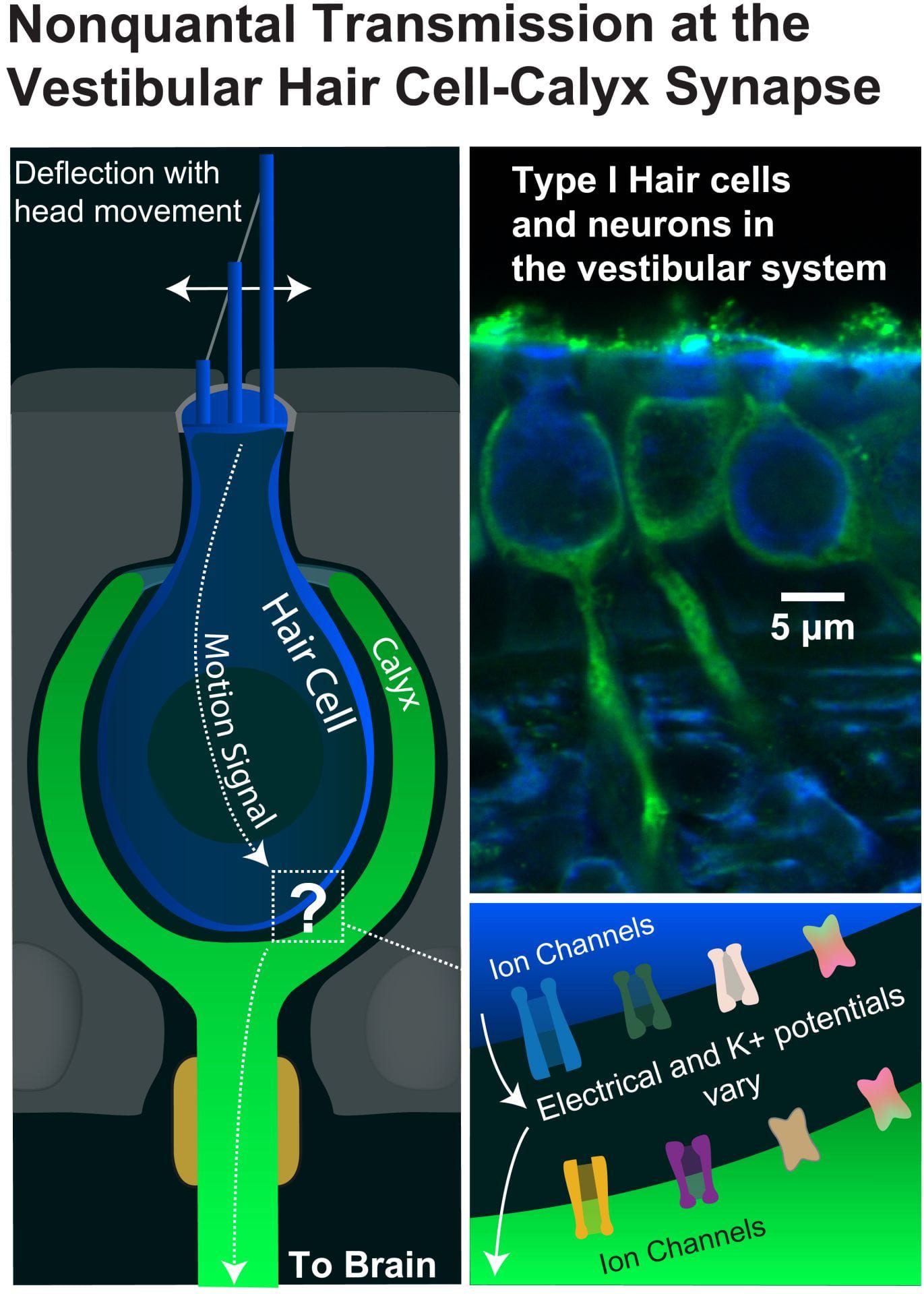After over 15 years of research, scientists have at last revealed the secrets of a very special synapse. Buried deep in the inner ear, these synapses can process signals faster than any others in the body, but neuroscientists could not figure out how this was possible – until now.
Humans, along with many other animals, rely on a delicate system of structures that allow us to walk and turn our heads without getting dizzy and falling over. This is known as the vestibular system – and when it goes wrong, it can lead to conditions like vertigo and other balance disorders. An estimated one in three Americans over the age of 40 are affected; treatment can be tricky, and patients are at risk of falls, causing further injury.
The reflexes driven by the vestibular system are the fastest anywhere in the nervous system. Previous studies uncovered that this was down to a special type of synapse, which can transmit information without the usual 0.5-millisecond delay that neurotransmitter-based signaling requires.
This superfast process was termed “nonquantal transmission”. However, although scientists had been able to put a name to the phenomenon, they still weren’t fully sure how it worked. The new study, led by a team at Rice University, has provided some answers.
The inner ear contains extremely sensitive cells called hair cells. As the name suggests, bundles of hair-like sensors on these cells detect movements of the head via the surrounding fluid. They transmit information to neurons that connect directly to the brain, providing constant updates so we can remain upright and keep our vision steady.
The neurons meet the hair cells at a cuplike structure called a calyx. As you can see in the diagram below, the calyx surrounds the end of the hair cell, leaving a minuscule gap – the synaptic cleft.

The hair cell (blue) is surrounded by the cuplike calyx (green) of its partner nerve cell. Ions flow through channels on either side, creating an electrical potential across the synaptic cleft that allows information to flow at superfast speeds. Image credit: Aravind Chenrayan Govindaraju/Rice University
“The vestibular calyx is a wonder of nature,” said study co-author Anna Lysakowski, from the University of Illinois at Chicago, in a statement. “Its large cup-shaped structure is the only one of its kind in the entire nervous system […] We’ve been trying to figure out its special purpose for a long time.”
The authors created a computer model to simulate nonquantal transmission, looking specifically at what was going on inside the synaptic cleft. They observed that the speed of transmission at these synapses was down to changes in electrical potential, by tracking the flow of potassium ions through channels in the hair cell and across the cleft.
“The mechanism turns out to be quite subtle, with dynamic interactions giving rise to fast and slow forms of nonquantal transmission,” said corresponding author Rob Raphael.
“The key capability was the ability to predict the potassium level and electrical potential at every location within the cleft,” added co-author Ruth Eatock, from the University of Chicago.
The team concluded that it was the very shape of the calyx itself that makes this type of transmission possible, and suggest in their paper that “this mechanism of electrical transmission between cells may act at other synapses.”
This work has been a long time coming for co-author Imran Quraishi in particular. Now an assistant professor at Yale University, Quraishi began working on an early version of the computer model during his graduate studies in Raphael’s research group. Over the intervening years, more and more evidence to support the idea of nonquantal transmission had come to light, but the underlying mechanism was still unclear.
“The unfinished work had weighed on me,” Quraishi said. Thankfully, though, help came in the form of graduate student Aravind Govindaraju, who took up the reins of the project in 2018.
As Raphael puts it, the culmination of all this work has provided science with some long-awaited answers.
“For the past 30 years – since the original observation of nonquantal transmission – scientists have wondered, ‘Why is this synapse so fast?’ and, ‘Is the transmission speed related to the unique calyx structure?’ We have provided answers to both questions.”
The paper is published in PNAS.
Source Link: Super Speedy Synapses In The Ear Keep Us From Falling, And Now We Know How